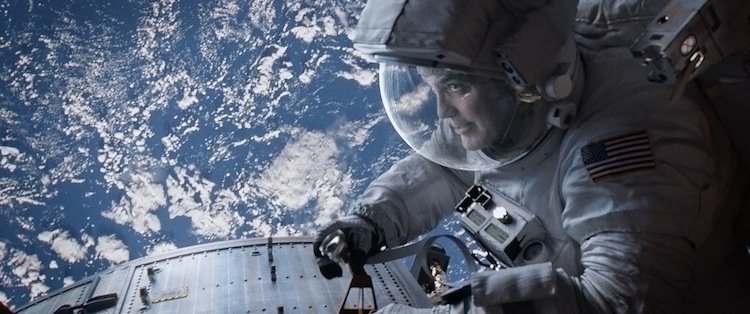
Former Astronaut David Wolf Reviews Gravity
Editor’s Note: Purdue University awarded Dr. David Wolf an honorary doctorate in engineering in ceremonies held at the West Lafayette campus on May 18.
The number-one movie in America, Gravity, is receiving universal praise for its depiction of space, but there are only a few people in the world who can actually compare the movie to a real-life NASA mission. Indy native and Purdue grad Dr. David Wolf is one of them. A former astronaut debuted a new program called “Astronaut Adventures” at The Children’s Museum on Saturday, and then he let us in on the movie’s authenticity and what spacewalkers really talk about.
MAXWELL BARNETT: In the movie, George Clooney’s character cracks a lot of jokes. Are astronauts all business while in space, or do you have time for a few laughs?
DR. DAVID WOLF: There are a few jokes made, but they need to be short and carefully chosen. Every word distracts the attention of hundreds of mission controllers doing very detailed work. We are very careful to minimize unnecessary chatter on the communications loops. But heck, it’s so amazing that one cannot help but be human, even during a spacewalk.
MB: Is it difficult for someone who’s been to the International Space Station to watch this movie?
DW: For me, watching Gravity brought back lots of amazing memories of life in space on the ISS. It’s amazing how well they “created” zero gravity in the studio, and how accurately they portrayed the way people move and objects behave under that condition. Even though the events unfolding were so extreme, it did capture the sense of spaceflight.
MB: The earth looks incredibly clear from space in the movie. Is this realistic?
DW: It’s even more spectacular than the movie was able to capture. The depth of colors, extreme contrasts, and dimension are beyond our ability to project on a screen. They are still really impressive in the movie.

DW: I have been our medical officer on four spaceflights, and some medical issues inevitably do come up. It’s good to have a crew member who is able to take care of these situations. Like in the movie, the doctor’s main work in space is centered on the mission unless needed to provide medical care.
MB: As one of the relatively few people who’s been on the International Space Station, what did the movie get right?
DW: A lot. The physics of motion and human physiology were mostly correct. The vehicle and spacesuits looked real, down to small details, even the colors. It captured what it is like to move around without gravity, and how easy it is to get out of control and flop into structures. We actually move much slower than they did in the movie to prevent causing damage. The appearance of the Space Station, inside the modules and the exterior, the various equipment, and spacesuits were very accurate, as well as the controls of the various vehicles and equipment. Even the thruster firings were close to correct. One cannot get into, or out of, the spacesuits as quickly as shown, but that’s okay. The Shuttle, ISS, and Chinese Space Stations are in different orbits such that moving between them is not really possible as depicted, but that’s a literary-license “nit.”
MB: Did you ever see debris in space? Is this an issue?
DW: We do see a fair amount of debris that comes from our own vehicle, but it does not pose a high-speed impact problem. We do see evidence of high-speed impacts by observing small damage on windows and structure. The kind of “wave” of large debris that caused enormous damage in Gravity has not been seen and is very unlikely. However, we do worry about damage to spacesuits during spacewalks and sharp edges created on structure that could cut spacesuit material. So the premise is true—space debris is a hazard.
MB: Are there any factual errors in the movie that you think are important to correct?
DW: I think that, allowing some literary license, nothing needs to be corrected. The movie is fantastic and gives a great feel of space with a really dynamic story. But, for example, one could not maneuver the “jet pack” nearly as fast or as far as George Clooney did. Also, the chain reaction of satellite debris would not unfold that quickly. We also maneuver the ISS to prevent these chain reactions when they are predicted. Go enjoy the movie without worrying if it’s perfect. It’s a great story and darn realistic.
MB: Do you have any favorite parts of the movie?
DW: I really like the entire movie. I did see it in 3-D. It took me back to my actual spacewalks and living inside the space station. If I am forced to pick, it would be when they were approaching the ISS and had to grab hold to stay on it. Inside the vehicles, the control labels were pretty accurate, even the one in Russian language. Also, oddly enough, Clooney’s character is trying to beat the spacewalk record of Anatoly Soloviev, a Russian cosmonaut. I personally did my first spacewalk with Anatoly, and he actually does hold the record.
For Wolf’s other favorite space movies and more insights into the realities of zero gravity, read our Q&A with him from the October 2013 issue.
Top photo courtesy Gravity; bottom photo by Jason Boyer





